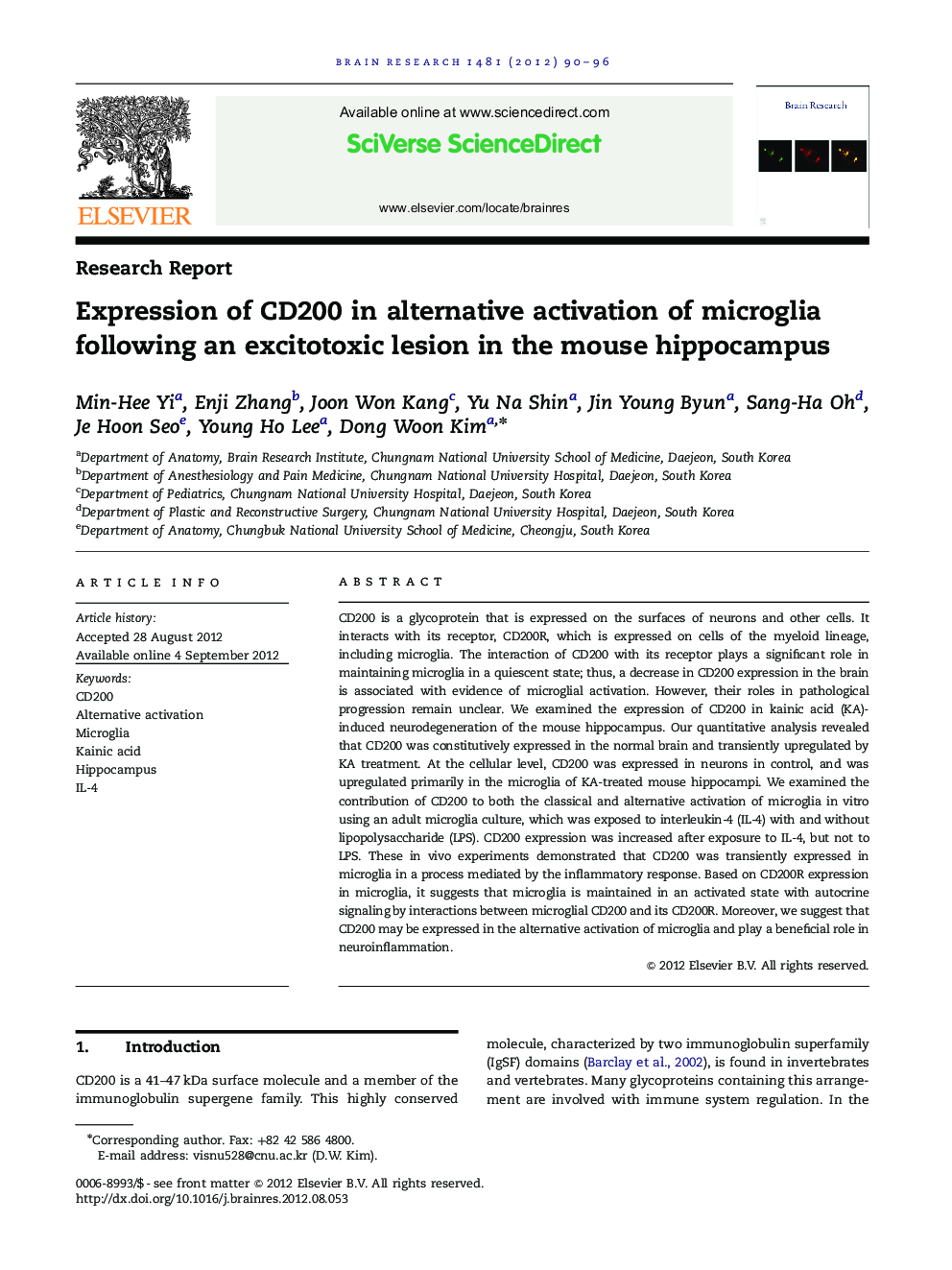| Article ID | Journal | Published Year | Pages | File Type |
|---|---|---|---|---|
| 4324977 | Brain Research | 2012 | 7 Pages |
CD200 is a glycoprotein that is expressed on the surfaces of neurons and other cells. It interacts with its receptor, CD200R, which is expressed on cells of the myeloid lineage, including microglia. The interaction of CD200 with its receptor plays a significant role in maintaining microglia in a quiescent state; thus, a decrease in CD200 expression in the brain is associated with evidence of microglial activation. However, their roles in pathological progression remain unclear. We examined the expression of CD200 in kainic acid (KA)-induced neurodegeneration of the mouse hippocampus. Our quantitative analysis revealed that CD200 was constitutively expressed in the normal brain and transiently upregulated by KA treatment. At the cellular level, CD200 was expressed in neurons in control, and was upregulated primarily in the microglia of KA-treated mouse hippocampi. We examined the contribution of CD200 to both the classical and alternative activation of microglia in vitro using an adult microglia culture, which was exposed to interleukin-4 (IL-4) with and without lipopolysaccharide (LPS). CD200 expression was increased after exposure to IL-4, but not to LPS. These in vivo experiments demonstrated that CD200 was transiently expressed in microglia in a process mediated by the inflammatory response. Based on CD200R expression in microglia, it suggests that microglia is maintained in an activated state with autocrine signaling by interactions between microglial CD200 and its CD200R. Moreover, we suggest that CD200 may be expressed in the alternative activation of microglia and play a beneficial role in neuroinflammation.
► CD200 expression in activated microglia. ► Colocalization of CD200 and CD200R in microglia. ► CD200 modulation in alternative activation of microglia.
